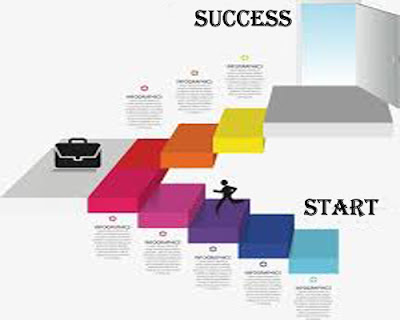What is digital portfolio and how it helps students for career success
In the 21st century, we are seeing a shift in views regarding how students can be tested and assessed based on their performances inside and outside the classroom. Students can also be assessed by creating and displaying their work online through social media, YouTube, and digital portfolios. Regardless of the format of assessment, technology is becoming a critical part of learning as well as student performance. So, how we can use technology to create better assessments?
Technologies are popping up everywhere that promise personalized learning through digital portfolio assessment, in which students showcase and assess their work and then post it online. The best digital portfolio processes do more than serve as an evaluation tool. It helps the student develop a stronger sense of themselves as a learner and see their growth over time. Students start to identify themselves as capable learners. If the digital portfolio has been maintained over several years, their progress is even more evident.
And isn’t that the ultimate goal of education? To develop individuals who can reflect on their actions and make changes for the betterment of themselves and those around them?
Digital portfolios came into prominence in the 1990s, around the time when computers became common place in classrooms. Digital portfolios cut the distance between student thinking and evidence of learning. There is no longer a need to represent understanding through a score or a grade. Digital portfolios allow students to learn the required material with depth and self-reflection.
Digital portfolios should be process oriented
A myth in education is that we should only showcase student’s best artifacts of learning. We might think of an artist’s body of work when considering digital portfolios as an alternative assessment. Yet how did that artist get to a point of success? The development of their skills and talent didn’t just happen. Many mistakes, quiet reflection, and new pursuits of learning had to have occurred prior to mastery.
So, it would be logical to expect a student’s digital portfolio to be process oriented. This means that at every critical stage of learning, something should be documented. Not everything is published, but there is reflection and context for the work that’s attached to the artifact. Families, peers, and the student themselves come to see that understanding does not come out of thin air. The result is an appreciation for the process of learning itself that is not dependent on an external evaluation.
Digital portfolios Prepare Students for career success
To thrive in the workforce, students must be able to differentiate themselves from other job candidates and show what they know in a way that goes beyond a transcript or static resume. The use of technology brings a job seeker to life and provides a connection point between employers and job candidates. Digital portfolios are a proven catalyst to employment for many students. The platform challenges the traditional resume and opens the door to a more holistic approach to cataloging achievements. For instance, a traditional resume allows a film student to describe a film they directed and produced, while a digital portfolio gives them the opportunity to actually show the film or clips from the film. This deliberate presentation of capabilities leads to increased confidence and accelerated progress.
Where the portfolios should be hosted?
Many inexpensive or free digital portfolio tools are readily available and can provide a low-risk opportunity for educational institutions to explore and refine the purpose of their digital portfolio program while beginning to establish a digital portfolio culture on campus.
Students can create an incredible portfolios using Google Drive, Portfoliobox, Dropr and Blogger. They can decide to keep the portfolios private, invite a specific audience to view them, or connect them directly with the worldwide audience.
A Glimpse about blogger
Blogs offer students the opportunity to create an online portfolio that documents success, progress, and achievement. In addition to a blog page, students share projects, investigations, and a bit about themselves. The sites allow the students to catalog their educational journey and provide opportunities to
- Demonstrate mastery of content.
- Reflect on the process of learning.
- Develop 21st century skills – empathy, communication, critical thinking, and creativity.
A teacher can use Blogger to host a blog to his class and allows students to be guest bloggers to share their experiences. Teacher can also include the links to each of their student’s portfolios on the blog to connect them in one place. You can check out a blog “AP Bio Rockstars” that is an example of it.








0 comments:
Post a Comment